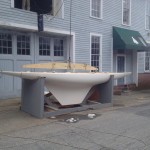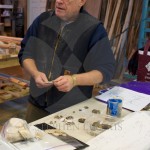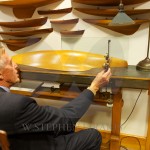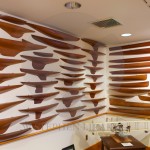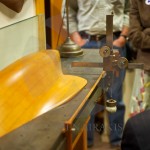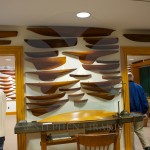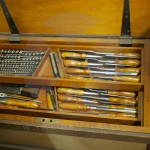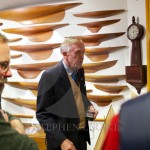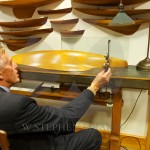America’s Cup Hall of Fame Inductees Announced
Published on July 20th, 2016
The 2016 inductees to the America’s Cup Hall of Fame will be Mr. Ernesto Bertarelli, two-time winner of the Cup in 2003 and 2007 and runner up in 2010, and the late 4th Earl of Dunraven, Cup challenger in 1893 and 1895.
The America’s Cup Hall of Fame was founded in 1992 as an arm of the Herreshoff Marine Museum (Bristol, RI) by Halsey Herreshoff, a four-time America’s Cup defender and grandson of legendary yacht designer Nathanael G. Herreshoff. Over eighty legends of the Cup have been inducted into the Hall.
Candidates eligible for consideration include members of the crew, designers, builders, syndicate leaders, supporters, chroniclers, and other individuals of merit. Each nominee is judged on the basis of outstanding ability, international recognition, character, performance, and contributions to the sport. The members of the Selection Committee are persons intimate with the history and traditions of America’s Cup and committed to the integrity of the Hall of Fame.
The 2016 America’s Cup Hall of Fame Induction Ceremony will take place in New York City on October 21 at the New York Yacht Club. Previous inductees here.
Ernesto Bertarelli (SUI) b. 1965
As founder, owner, and crewmember of the first Cup boats from Switzerland, all named Alinghi, Bertarelli won the America’s Cup in Auckland, New Zealand in 2003, and defended it successfully in Valencia, Spain in 2007. In 2010 at Valencia, in the first Cup match between two multihulls, Alinghi’s winning streak came to end.
Bertarelli sailed aboard his Cup yachts continuing the Cup tradition of owner-sailors that have included Harold Vanderbilt, T.O.M. Sopwith, and Ted Turner. Bertarelli competed in all the races in the 31st, 32nd, and 33rd America’s Cup matches in several roles, including navigator, afterguard member, backstay trimmer, and, in 2010, as helmsman.
Bertarelli’s vision for the America’s Cup clearly broke boundaries. The first Cup winner from continental Europe, he took the Cup back to Europe and produced the 32nd America’s Cup in Valencia, which was among the most successful events in the competition’s post-war history. That event hosted more challengers than any other, Fremantle excepted.
Bertarelli also organized the first Acts (now called the Louis Vuitton America’s Cup World Series), a series of regattas for the challengers and the defender which toured venues in Europe.
The 33rd Match in 2010, beset by legal challenges, was eventually decided on the water by gigantic multihulls, the fastest Cup yachts ever built up to that time, with the Alinghi team losing the Cup to BMW Oracle Racing.
Alongside his achievements in other highly competitive circuits, Ernesto Bertarelli shows a depth of ability to build talented teams and a remarkable determination to win. He has created a new winning tradition in Swiss sailing and has both inspired and invested in the next generation of his nation’s sailors.
Windham Thomas Wyndham-Quin, 4th Earl of Dunraven and Mount-Earl (GBR) (1841-1926)
Lord Dunraven was an Oxford graduate, cavalry officer, war correspondent, adventurer, big game hunter, politician, racehorse owner and yachtsman. He was also a great lover of the United States and her people, investing in land in Colorado and hunting elk with Buffalo Bill Cody in Nebraska.
A fully qualified yacht captain and helmsman in his own right, he did much to encourage yacht racing and the advance of yacht design. He was also a prolific yacht owner with myriad small racing yachts, Big Class racers, cruisers, and power yachts.
In 1893, Lord Dunraven challenged the Cup’s holder, the New York Yacht Club. During the negotiations over the conditions of the match, Dunraven achieved the concession to drop the Inside Course (a notorious course, riddled with shoals and strong currents, that favored the defender) from the menu of courses used up to that time for the Cup races. From that point on, only the Ocean Course, free from headlands, and largely free of shoals, was used for the races, benefitting all future challengers.
For the match, Dunraven hired the brilliant George L. Watson to design his contender, Valkyrie II. While she was out-sailed by the defending Vigilant, the first Herreshoff Cup defender, the races attracted vast crowds and increased the popularity of the Cup as a sporting spectacle. The last race in the series was one of the most exciting in America’s Cup history, with Vigilant trailing for many miles until finally overtaking Valkyrie II near the finish, winning by just 40 seconds on corrected time—the closest Cup race up to that time.
Having caught “America’s Cup fever”, Dunraven returned in 1895 with the Watson-designed Valkyrie III, a pioneer of the modern challenger, which was better adapted to local racing conditions and more professionally managed than any previous challenger. But the race series descended into acrimony by misunderstandings and disagreements between the competitors.
The spectator fleet had grown to unmanageable proportions and was perceived as a major problem by the challenger. A minor collision in the second race for which Valkyrie III was found to be at fault led Dunraven to withdraw from the series. Thereafter he made increasingly intemperate accusations, and yacht racing made headlines for all the wrong reasons.
Dunraven was one of the leading yachtsmen of the late nineteenth and early twentieth centuries. His two campaigns for the Cup raised the level of Cup racing and were directly responsible for ushering in the Cup’s classic golden age from Sir Thomas Lipton’s challenges to those of T.O.M. Sopwith.
Source: Herreshoff Marine Museum




